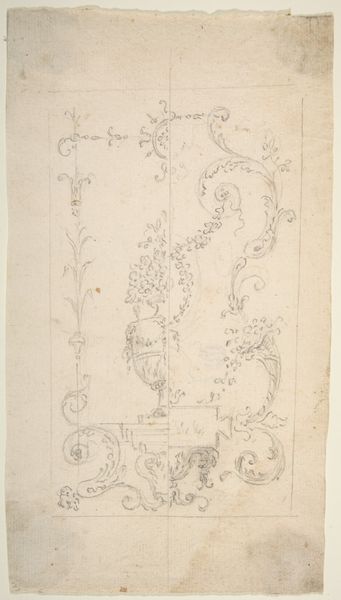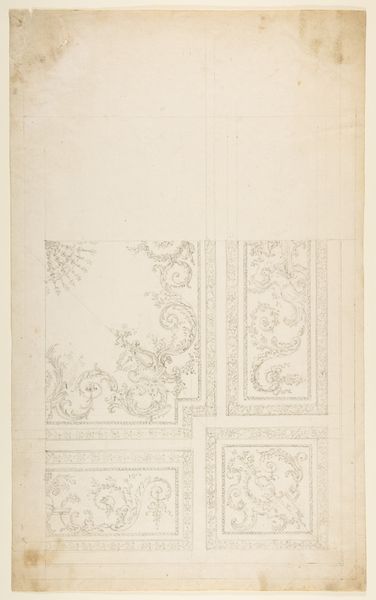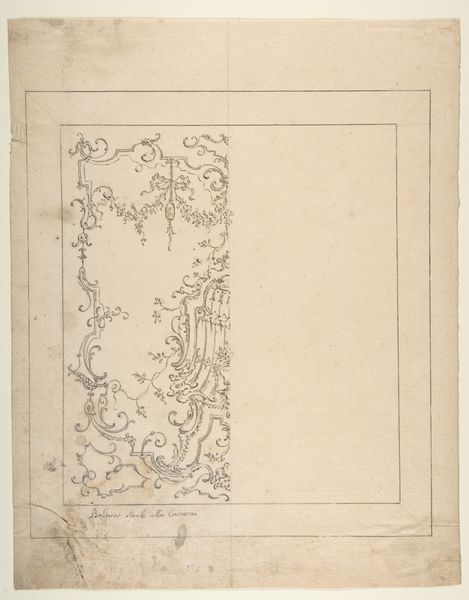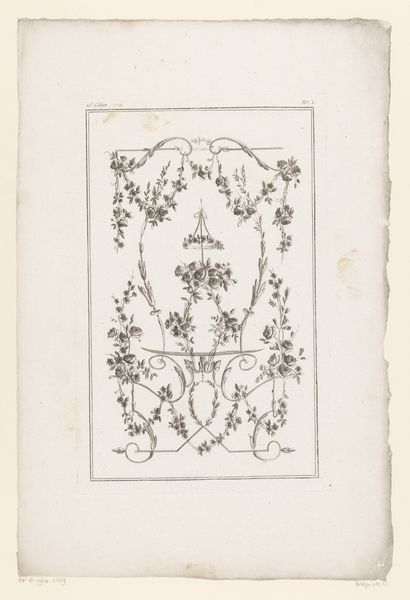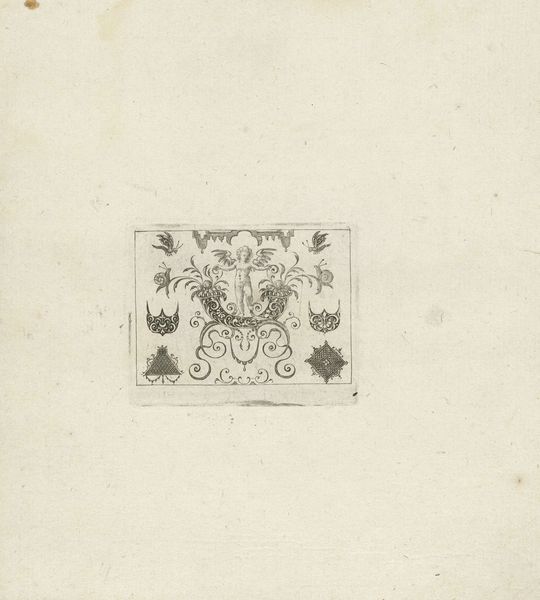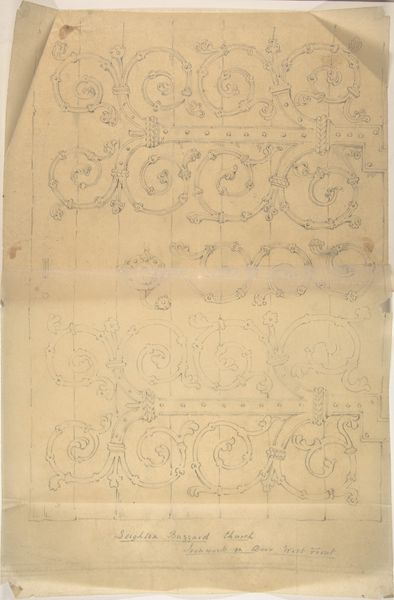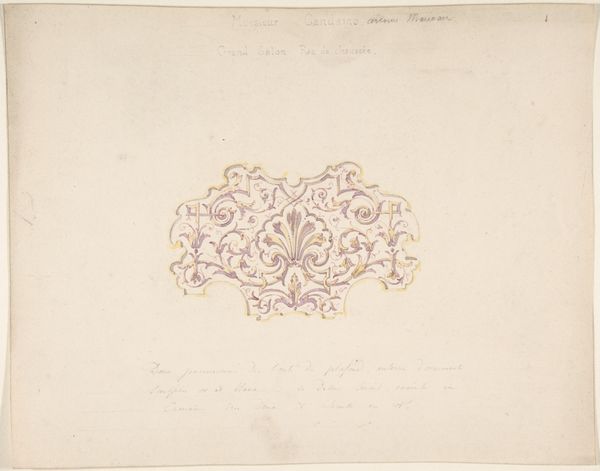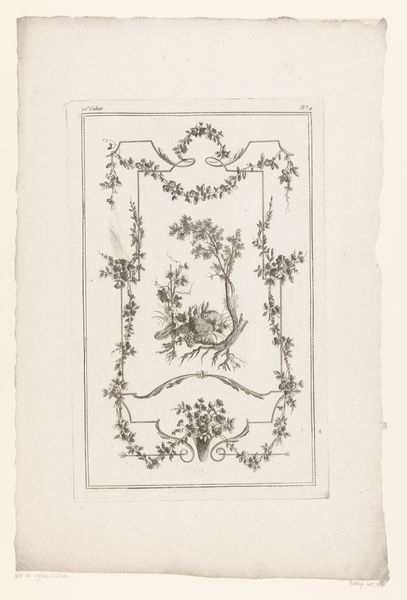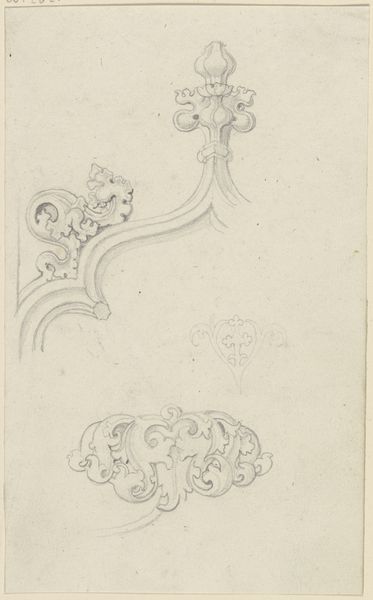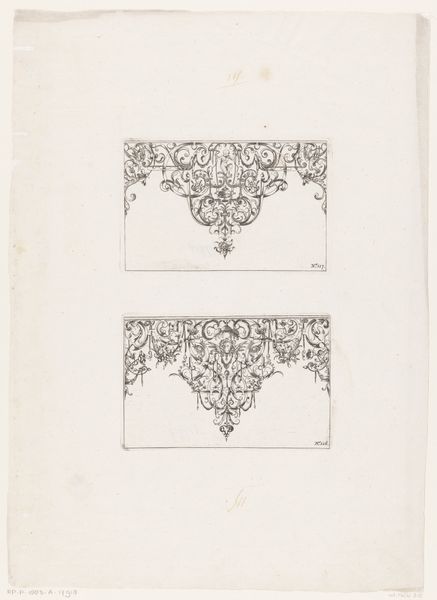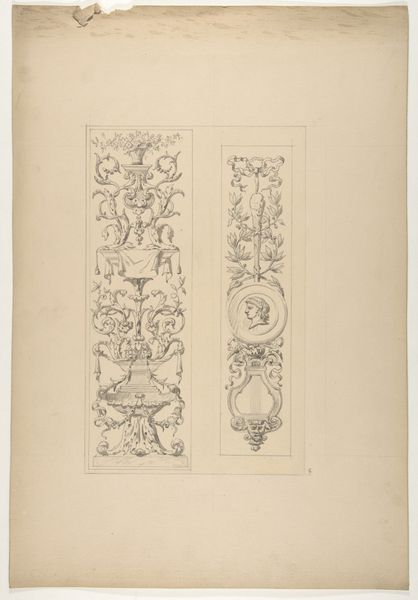
drawing, paper, pencil
#
drawing
#
aged paper
#
toned paper
#
light pencil work
#
pencil sketch
#
old engraving style
#
paper
#
personal sketchbook
#
geometric
#
pencil
#
ink colored
#
sketchbook drawing
#
pencil work
#
decorative-art
#
sketchbook art
Dimensions: overall: 30.5 x 23.2 cm (12 x 9 1/8 in.)
Copyright: National Gallery of Art: CC0 1.0
Curator: This drawing, "Handmade Embroidery" by Julie C. Brush, created between 1935 and 1942, presents a really fascinating example of the intersection of design and craft. Editor: It’s on paper and uses pencil, and it seems to depict patterns for embroidery... maybe for decorating linens? What do you make of it? Curator: The immediate thing that grabs me is the material context. The use of pencil and paper is inherently accessible, democratic. It suggests a level of planning and labor often overlooked in the final "precious" object of embroidery itself. Were these patterns meant for personal use, suggesting a culture of domestic craft, or intended for a broader market? What does it tell us about the artist’s own labor and the possible economic motivations? Editor: So, it's less about the aesthetic quality of the drawing itself and more about what it reveals about the process of creating embroidered textiles? Curator: Precisely. The "old engraving style" aesthetic speaks to a period of mass-reproduction influencing even handmade items. Was Brush attempting to elevate craft to art, or streamline production for consumption? These weren’t mutually exclusive objectives in the early 20th century. Editor: That makes me consider the geometric designs. Are they trying to simplify complex patterns to make the embroidery more achievable, thereby making art and craft more accessible? Curator: That's a great point! It brings the act of artistic labor to the forefront, connecting individual artistry to wider issues of consumption and the availability of beautiful design to everyday people. It speaks to the social lives of objects. Editor: This perspective makes me appreciate the drawing in a completely different light; seeing it less as a preliminary sketch and more as a document of creative and material intention. Curator: Absolutely. Thinking about the processes and materials transforms how we interpret it. It bridges what we think of high and low art.
Comments
No comments
Be the first to comment and join the conversation on the ultimate creative platform.

